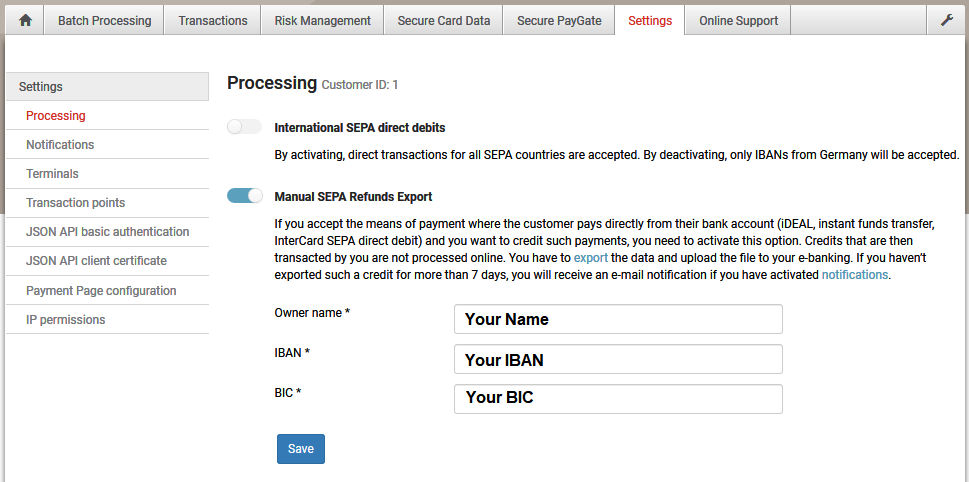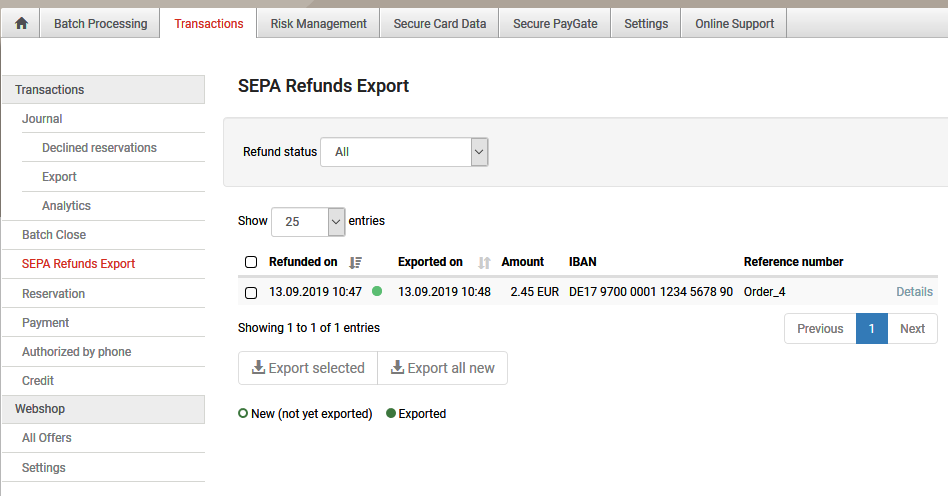SEPA ELV
SEPA transactions can also be processed via the Saferpay JSON API, through a partnership with Intercard.
Requirements
The handling of SEPA payments with Saferpay requires:
- The corresponding Saferpay eCommerce licence and thus the existence of a valid identification with a username and password for the Saferpay system.
- Availability of at least one active Saferpay terminal via which payment can be carried out and availability of the associated Saferpay TerminalId.
- A valid SEPA contract with Intercard.
Attention: For SEPA activation on the Saferpay terminal and the necessary contract, please contact your Saferpay sales contact.
Info: SEPA makes it necessary to define a unique SEPA MandateId for each transaction. You -the merchant- have two options to deal with this requirement:
- You can define your own MandateId and submit it inside the Payment.MandateId parameter within the initialize request! Make sure it is unique!
- If Payment.MandateId is not used, Saferpay will use the Saferpay TransactionId as its replacement, which is unique. You can find this value inside the authorization response as Transaction.Id!
SEPA manual Refunds
Saferpay does offer the possibility to accept refunds for certain SEPA-based payment methods. However those need special attention. Reason being, that SEPA does not directly offer refunds, which is just in the nature of the payment-system itself. Due to this, Saferpay offers a workaround, to make manual SEPA-refunds easier for the merchant.
Step 1: Activation
Before you -the merchant- can start accepting refunds, they need to be activated inside the Saferpay Backoffice:

Step 2: Executing refunds
Once the activation has been done, you can execute refunds, like any other payment method. Either via API, or inside the Saferpay Backoffice.
Step 3: Uploading the refunds into your online-banking
This is, where SEPA-refunds deviate from other payment methods, like credit cards.
As mentioned before, SEPA does not offer direct refunds via the processing itself. This is why Saferpay first collects all executed refunds inside the backoffice:

These refunds need then to be exported into a special XML-File, which can be done right there inside the Backoffice. The created XML-file can then be uploaded into your online banking-portal, which executes these refunds in a batch, eliminating the need, of doing them all manually. You can download an example-file here.
Important: It may be necessary to contact your bank, for this import-feature to be activated! Some also may not offer it at all!
Caution: SEPA-refund-files from the test-environment can't be uploaded into online-banking portals, since they only contain test-data, thus non-valid IBANs!